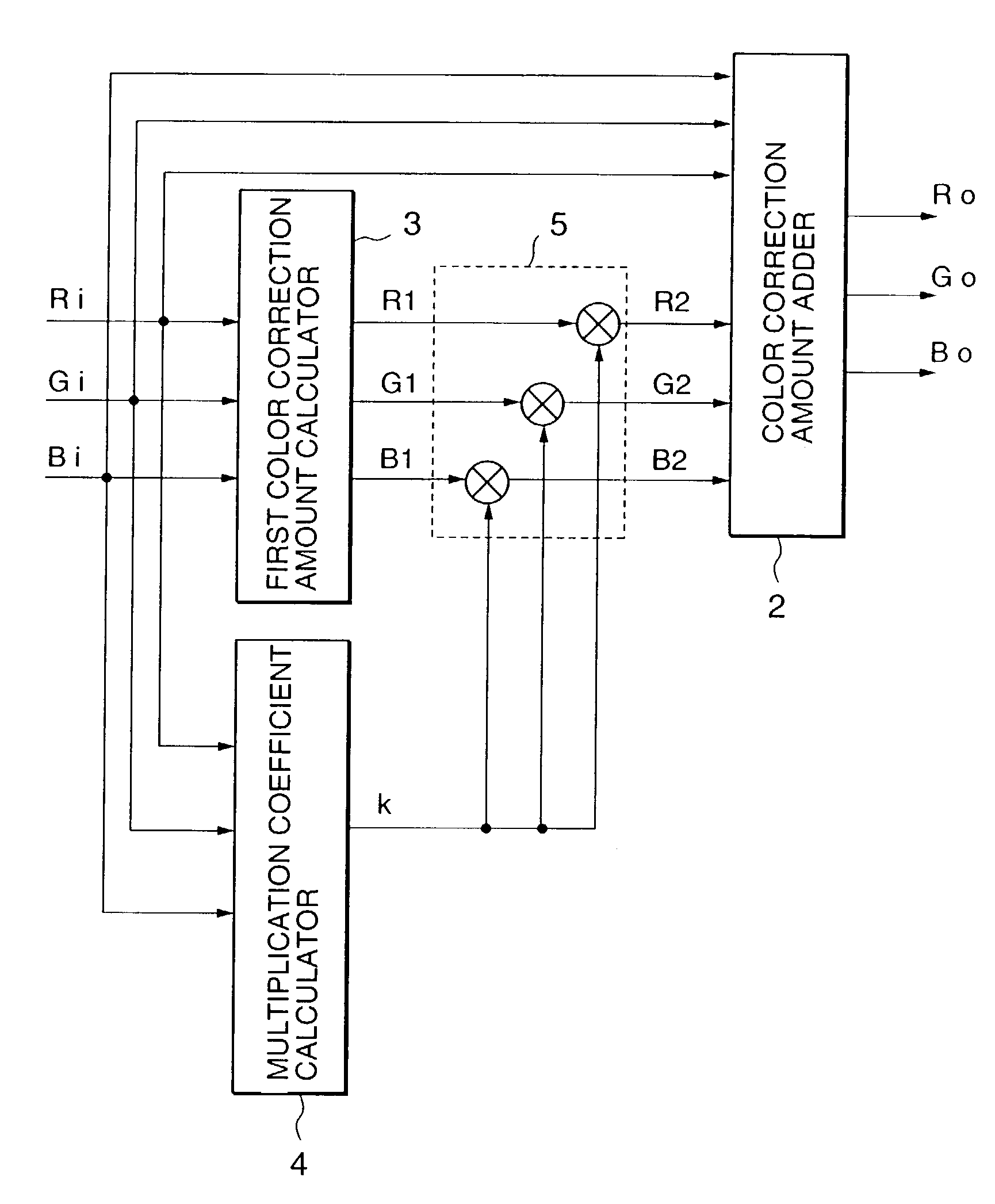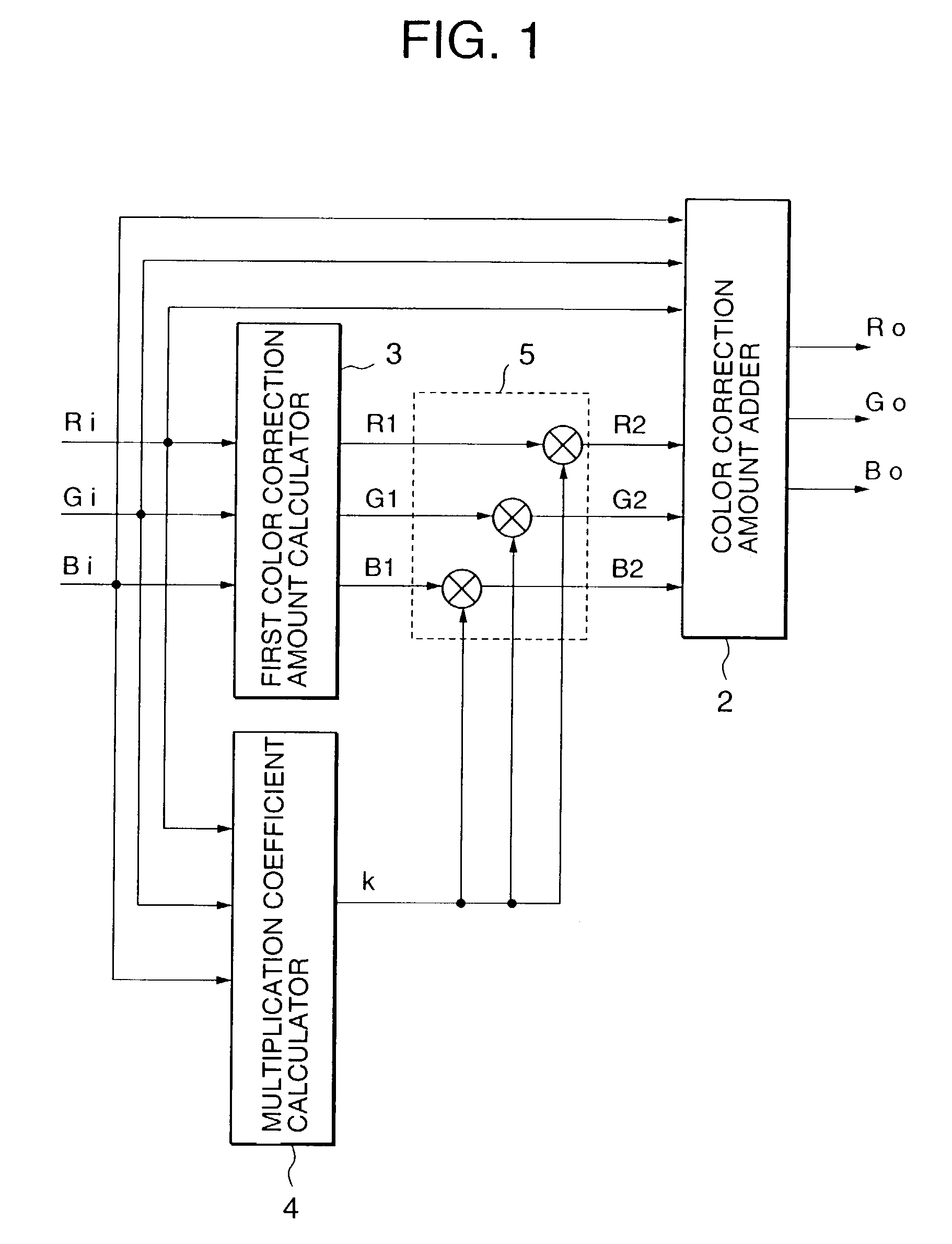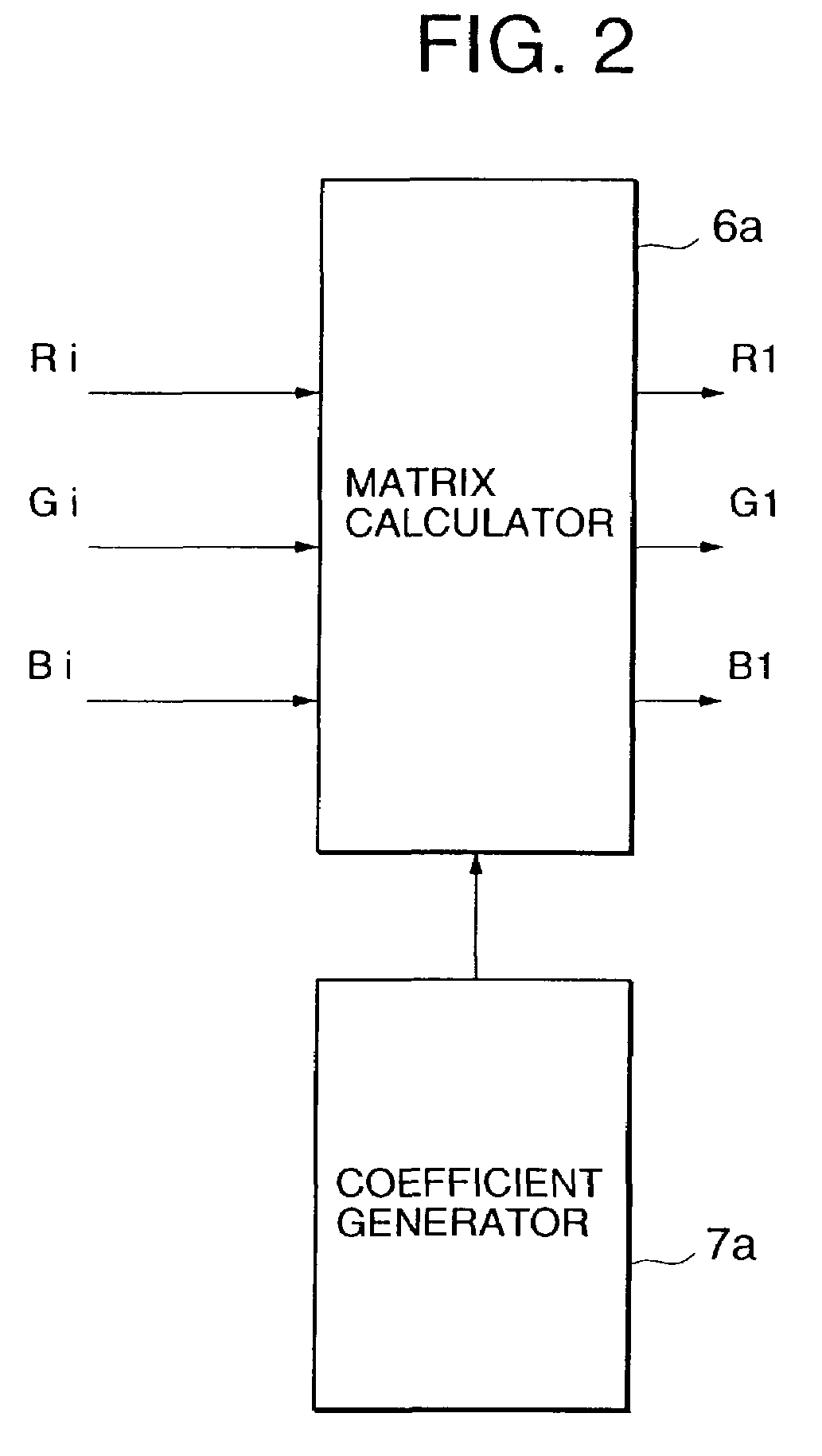Color conversion device and color conversion method
- Summary
- Abstract
- Description
- Claims
- Application Information
AI Technical Summary
Benefits of technology
Problems solved by technology
Method used
Image
Examples
embodiment 1
[0071]FIG. 1 is a block diagram showing an example of configuration of a color conversion device according to an embodiment of the invention. The illustrated color conversion device is for performing color conversion on first image data consisting of a plurality of first color data Ri, Gi, Bi and constituting image information for each pixel, to produce second image data consisting of a plurality of second color data Ro, Go, Bo, and constituting image information for each pixel, and comprises a first color correction amount calculator 3, a multiplication coefficient calculator 4, a second color correction amount calculator 5, and a color correction amount adder 2.
[0072]The first color data Ri, Gi, Bi are input to the first color correction amount calculator 3. The first color correction amount calculator 3 calculates first color correction amounts R1, G1, B1 for the first color data Ri, Gi, Bi, and outputs the first color correction amounts R1, G1, B1 to the second color correction ...
embodiment 2
[0123]FIG. 10 is a block diagram showing another example of configuration of first color correction amount calculator 3 in a color conversion device according to Embodiment 1 of the present invention. In the drawing, reference numeral 18 denotes an αβ calculator calculating and outputting a maximum value β and a minimum value α of the input first color data first color data Ri, Gi, Bi, and generating and outputting an identification code indicating which of the first color data is the maximum and which of the first color data is the minimum. Reference numeral 19 denotes a hue data calculator calculating hue data r, g, b, y, m, c from the first color data Ri, Gi, Bi and the outputs of the αβ calculator 1. Reference numeral 20 denotes a polynomial calculator, 6b denotes a matrix calculator, and 7b denotes a coefficient generator.
[0124]FIG. 11 is a block diagram showing an example of configuration of the polynomial calculator 20. In the drawing, reference numeral 21 denotes a zero remo...
PUM
 Login to View More
Login to View More Abstract
Description
Claims
Application Information
 Login to View More
Login to View More - R&D
- Intellectual Property
- Life Sciences
- Materials
- Tech Scout
- Unparalleled Data Quality
- Higher Quality Content
- 60% Fewer Hallucinations
Browse by: Latest US Patents, China's latest patents, Technical Efficacy Thesaurus, Application Domain, Technology Topic, Popular Technical Reports.
© 2025 PatSnap. All rights reserved.Legal|Privacy policy|Modern Slavery Act Transparency Statement|Sitemap|About US| Contact US: help@patsnap.com



